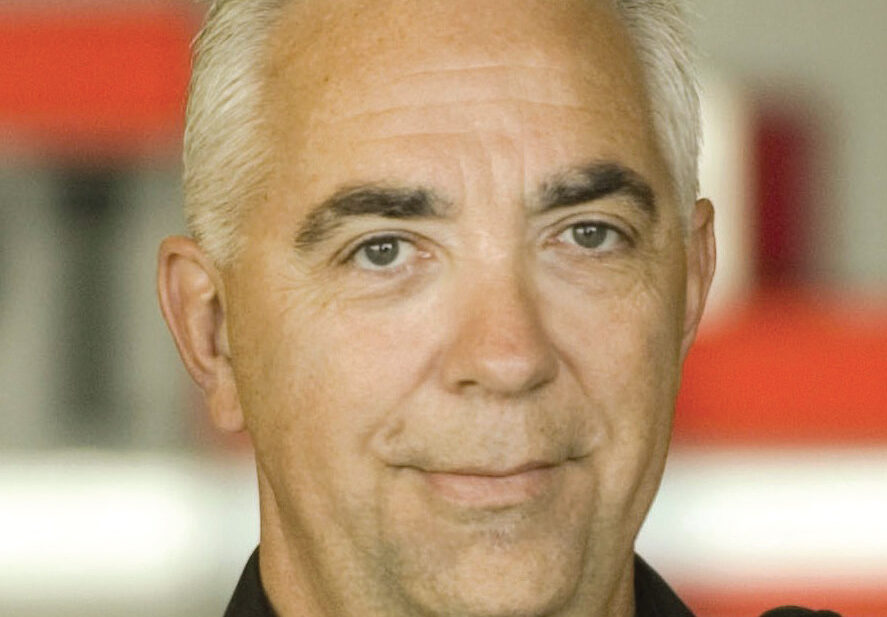
Features
Leadership
Response
Training
StopBad: Adapting to changing times
June 4, 2020
By Gord Schreiner

While the fire service has always been known for its ability to adapt to various circumstances, no one would have expected the rapid onset of change propelled by a global health crisis. I am writing this article on April 1, and for the past few weeks the fire service (and every other sector) has been making many changes daily, sometimes hourly.
Everything we do has changed. Fire departments everywhere are adapting to these changes in their own way to meet the needs of the citizens, while ensuring they keep their firefighters safe. For example, my department is a medium sized department serving about 22,000 citizens and we have developed some very creative ways to adapt.
While it may seem strange to have a firefighter work from home, one staff member is doing just that. This member takes a staff vehicle and their PPE home and responds to all incidents, meeting two other crew members on scene. The crew responding from the station use our rapid response vehicle (1-ton mini). If any of these firefighters were to have contact with COVID-19 at the incident, they and their equipment would return to the station in the staff vehicle, leaving the rapid response vehicle uncontaminated and ready for another response. Once back at the station, all staff, equipment and vehicles would be thoroughly cleaned.
We are doing similar protocols with our full-sized engines. They respond with a smaller crew with two additional firefighters following in a staff pick-up truck. They use all appropriate PPE, including SCBA, as soon as possible. This way, we get the same amount of firefighters to the incident while improving our physical distancing. Our work from home firefighters can access their fire station computer desktop and have been reviewing and updating operational guidelines, policies, lesson plans, training documents and pre-plans.
Like most departments, our station has been closed to the public. Before you are allowed entry, we ask a series of questions to determine if it is appropriate. Once inside, without touching anything, you head straight to a sink and wash your hands. This protocol is put in place for everybody, including all firefighters.
Our fire station, vehicles and equipment have never been so clean. While we have always kept things pretty clean, we are now relentless in our efforts. We have a good supply of cleaning products, masks and gloves and have developed some very robust procedures to ensure optimal sanitation. We were fortunate to have ordered extra cleaning supplies and PPE in January, when it seemed apparent that Canada would be affected by COVID-19.
One of the simple things we are doing is placing “Cleaned” stickers on the gap of vehicle, washroom and office doors, indicating the area has been thoroughly cleaned. If the sticker is intact we know the area is still cleaned. When the sticker is broken by a user (including the Chief), the individual is responsible to re-clean the area and put a new sticker on the door. Date, time and initials can be written on the sticker. This has provided our members with a level comfort as they know the space in which they are working, has been properly cleaned.
We, like many other paid on call/volunteer fire departments have cancelled our weekly scheduled training sessions. This has been one of our most difficult challenges as we love to train. In fact, we offer three different weekly training sessions to our members. Like many of you, we have been scrambling to fill this important need. We recently did our first virtual training session. Thirty-six of our members virtually attended and participated in a power point presentation, video and group discussion. We found this session to be very useful and a good chance for us to reconnect with some members. While we won’t be using this format every week, we believe it is very useful as long as it is not over used (just like other training).
Over the past few years, we had been developing a lot of our own training videos, posted to our website. We have recently accelerated our online efforts and are currently producing about two new videos per week. Now, many are designed around training related to the crisis and we encourage our members to view these videos. After viewing, our firefighters then answer a few questions related to the video and we document their efforts in our training files. We are also encouraging our members to visit other training websites for relevant online training. Many of these sites allow students to view the training, answer questions and print a certificate which can also be added to our training files.
We are also working on several training solutions in an effort to maintain and improve our practical skills. We are asking our firefighters to organize themselves in groups of three, to come into the station, don their PPE, including SCBA, and complete two or three of our very popular Seconds Count drills. Seconds Count drills are short, timed evolutions covering a variety of skills using 24 different drills. Once the drills are completed, PPE, vehicles and equipment are thoroughly cleaned and put back into service. These training sessions are recorded in our training files.
The fire service has always been great at sharing but this current worldwide crisis has brought us even closer together. In the fire service, we will continue to be leaders in our communities and adapt to change so we can continue to answer the bell.
Gord Schreiner joined the fire service in 1975 and is the full-time fire chief in Comox, B.C., where he also manages the Comox Fire Training Centre. Contact him at firehall@comox.ca and follow him on Twitter at @comoxfire.
Print this page